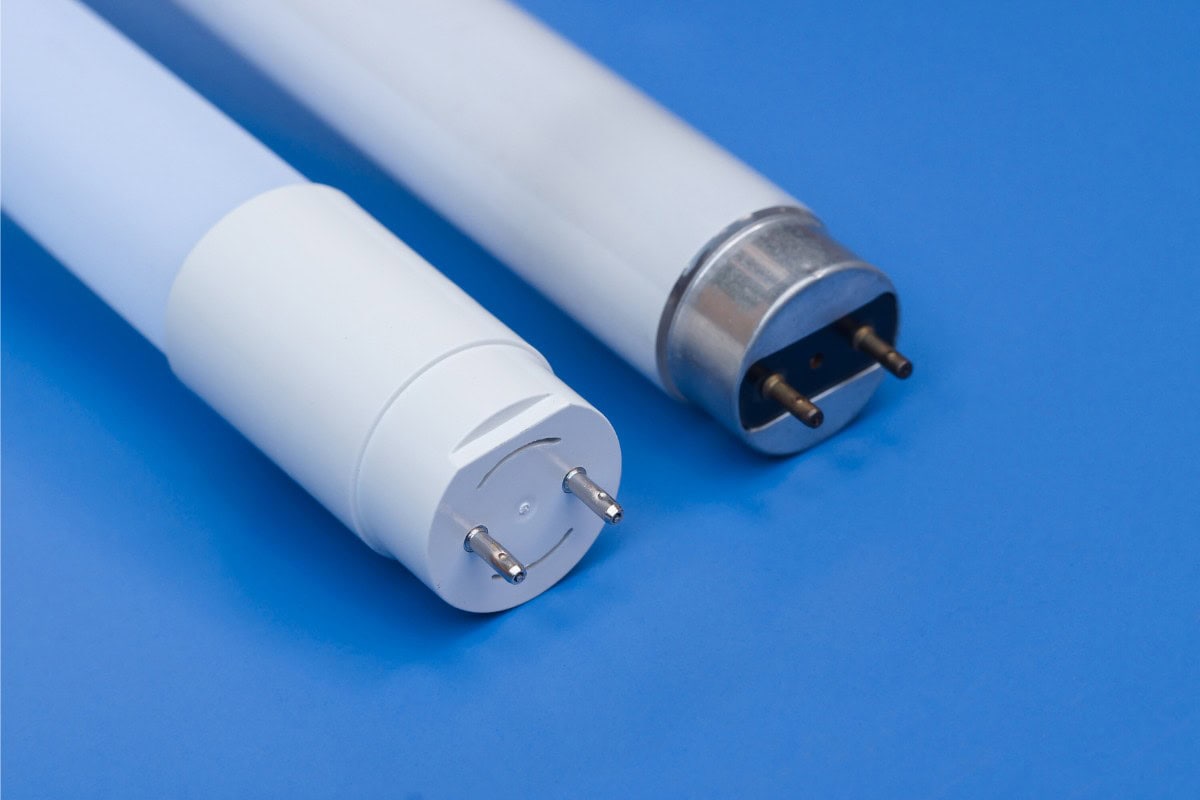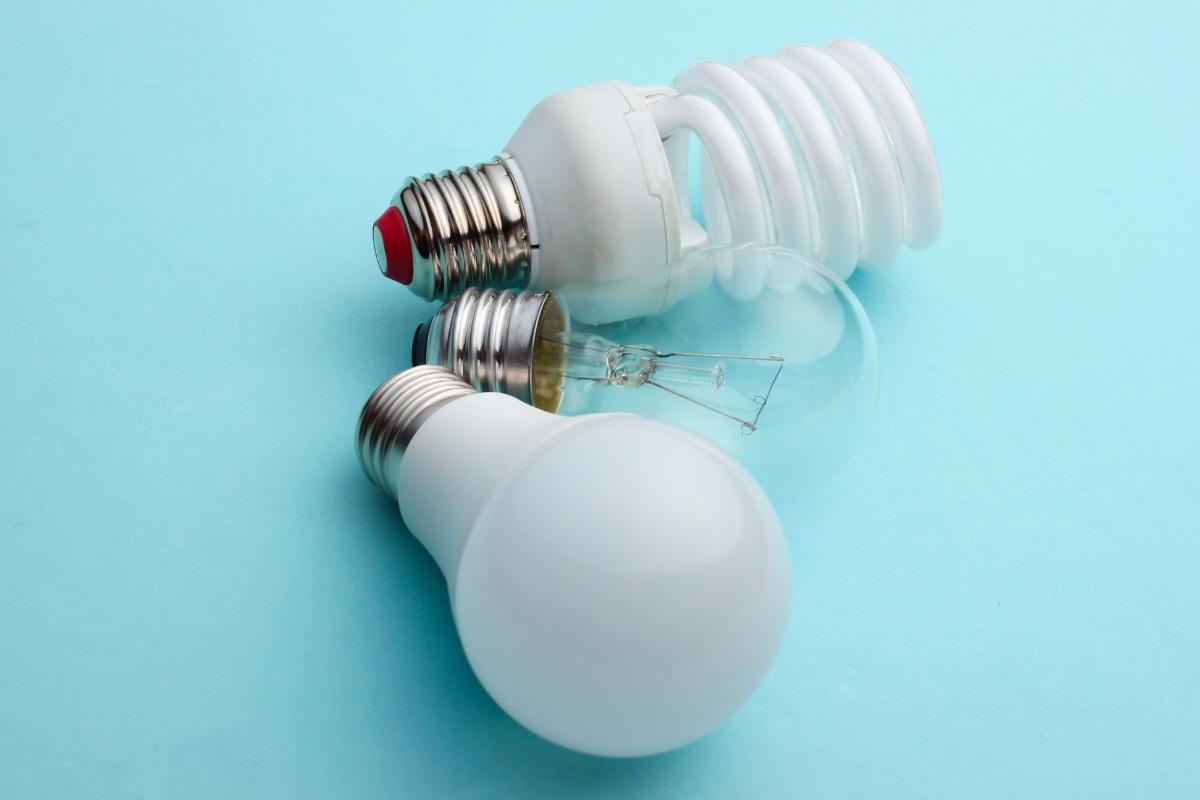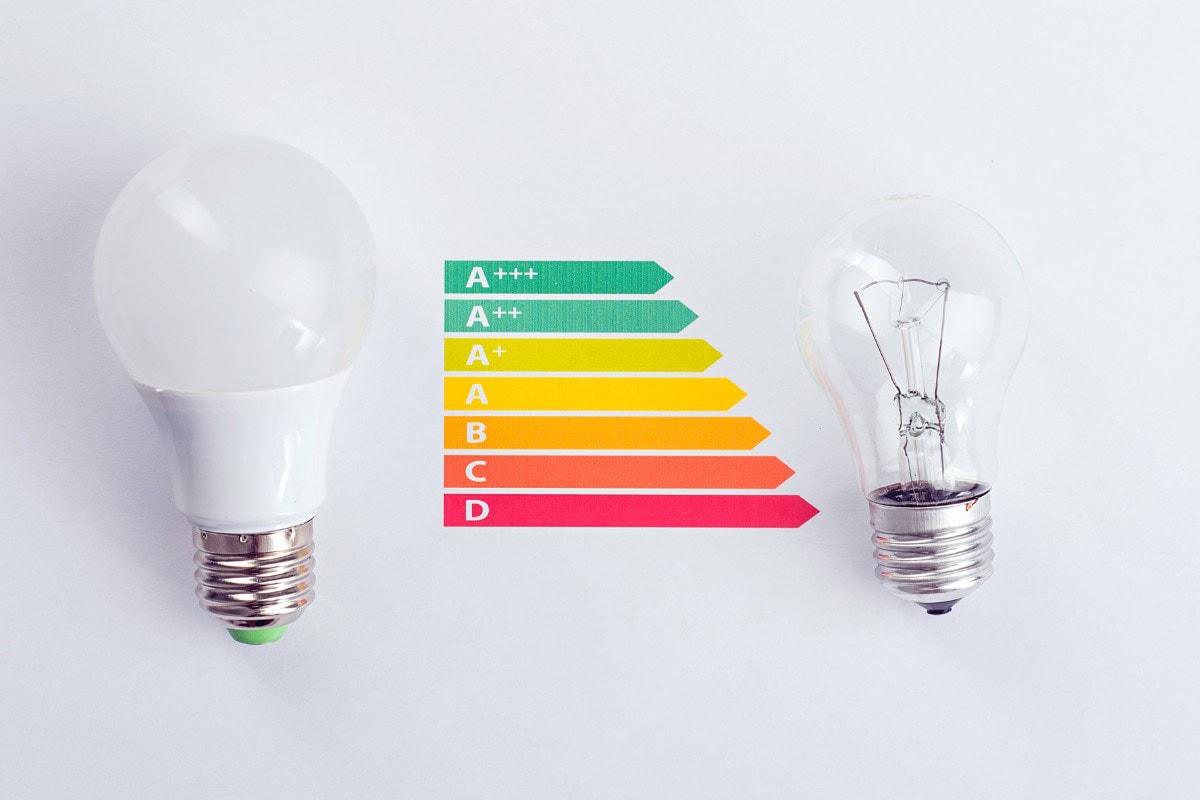Type T light bulbs have been a staple for decades, illuminating homes, offices, and various other spaces. These tubular fluorescent lamps, named for their distinctive shape, have evolved over time to meet the changing needs of consumers and advancements in technology.
What Is a Type T Light Bulb
Type T light bulbs, also known as tubular fluorescent lamps, are a type of lighting that has been widely used for many years. The “T” in their name is “tubular,” indicating their long, cylindrical shape. The number following the “T” represents the diameter of the bulb in eighths of an inch. For example, a T8 bulb has a diameter of 8/8 inches, or 1 inch.
These bulbs produce light through a process called fluorescence. Inside the glass tube, there is a small amount of mercury and an inert gas, usually argon. When electricity passes through the tube, it excites the mercury vapor, causing it to emit ultraviolet light. This ultraviolet light then interacts with the phosphor coating on the inside of the tube, which converts it into visible light.
Type T bulbs come in various lengths and diameters to suit different lighting needs. They typically use a pin-type base for connection and require a ballast to regulate the current. Compared to incandescent bulbs, Type T bulbs generally operate at a cooler temperature, making them more energy-efficient.
The development of Type T bulbs can be traced back to the 1930s when the first fluorescent tubes were introduced. Over time, improvements in technology have led to more efficient and longer-lasting Type T bulbs, cementing their place as a popular choice for both residential and commercial lighting applications.
Types of Type T Light Bulbs
Type T light bulbs come in various sizes and specifications, each designed to cater to specific lighting requirements. Let’s take a closer look at some of the most common types:
T8 Fluorescent Tubes
T8 bulbs are the most widely used Type T light bulbs in both commercial and residential settings. With a diameter of 1 inch (8/8 inches), these bulbs are known for their energy efficiency and versatility. They are commonly found in offices, schools, hospitals, and homes, providing bright, even illumination. T8 bulbs typically have a longer lifespan than older T12 bulbs and offer improved color rendering, making them a popular choice for general lighting needs.
T5 Bulbs
T5 bulbs are slimmer than T8 bulbs, with a diameter of 5/8 inches. Despite their smaller size, T5 bulbs are known for their high efficiency and excellent lumen output. They are often used in areas where space is limited, such as under-cabinet lighting, display cases, or task lighting. T5 bulbs also have a higher color rendering index (CRI) than T8 bulbs, making them ideal for applications where color accuracy is crucial, such as in art galleries or photography studios.
T12 Bulbs
T12 bulbs, with a diameter of 1.5 inches (12/8 inches), represent an older technology in the world of Type T light bulbs. While they were once widely used, they are gradually being phased out in favor of more energy-efficient options like T8 and T5 bulbs. T12 bulbs consume more energy and have a shorter lifespan than their newer counterparts. As a result, many countries have implemented regulations to phase out T12 bulbs and encourage the adoption of more efficient alternatives.
In addition to these common types, there are also less frequently used Type T bulbs, such as T2 and T4 bulbs, which have even smaller diameters and are used in specialized applications.
When comparing T5, T8, and T12 bulbs, it’s evident that T5 and T8 bulbs offer superior energy efficiency, longer lifespans, and better light quality. The choice between T5 and T8 often depends on the specific application and space constraints. T12 bulbs, while still in use in some older fixtures, are becoming less common as the industry shifts towards more energy-efficient solutions.
Applications and Uses of Type T Bulbs
Type T light bulbs find applications in a wide range of settings thanks to their versatility, energy efficiency, and adaptability. Here are some of the most common uses for these tubular fluorescent lamps:
Commercial and Industrial Lighting
One of the primary applications of Type T bulbs is in commercial and industrial spaces. Office buildings, warehouses, and factories often rely on T8 or T5 bulbs for their general lighting needs. These bulbs provide bright, even illumination across large areas, making them ideal for workspaces where good visibility is essential. The energy efficiency of Type T bulbs also helps reduce operating costs in these large-scale lighting scenarios.
Residential Lighting
While Type T bulbs are more commonly associated with commercial settings, they also have their place in residential lighting. T8 or T5 bulbs are often used in areas such as kitchens, particularly for under-cabinet lighting, where their slim profile and bright output are advantageous. Garages and workshops can also benefit from the even illumination provided by Type T bulbs, ensuring a well-lit space for tasks and projects. Type T bulbs offer a practical and energy-efficient lighting solution in laundry rooms and utility areas.
Specialized Applications
Beyond general lighting, Type T bulbs can be used in various specialized applications. In horticulture, T5 bulbs are popular for indoor plant growth and hydroponics setups. Their high light output and specific color temperature options make them well-suited for promoting healthy plant development. Aquariums and terrariums also use Type T bulbs, as they can provide the necessary lighting for aquatic plants and animals while maintaining a sleek, streamlined appearance.
Display cases and signage are other areas where Type T bulbs shine. The even illumination and good color rendering of T8 or T5 bulbs help showcase products or artwork in their best light, drawing attention and enhancing visual appeal.
Type T Bulbs vs. LED Bulbs
As LED technology advances and gains popularity, it’s worth comparing Type T bulbs with their LED counterparts. Let’s take a closer look at how these two lighting options stack up against each other in various aspects:
Energy Efficiency
Regarding energy efficiency, LED bulbs have a clear advantage over Type T bulbs. LED bulbs typically consume 25-80% less energy than traditional fluorescent tubes while providing similar or better light output. This translates to significant long-term cost savings on electricity bills. While more efficient than incandescent bulbs, Type T bulbs still consume more energy than LEDs.
Light Quality and Output
Type T and LED bulbs offer good light quality, but LEDs have an edge regarding color rendering index (CRI). LED bulbs can achieve higher CRI values, meaning they can more accurately represent the true colors of objects. Regarding light distribution, LED bulbs often provide a more directional light output, while Type T bulbs emit light in all directions. This can be advantageous or disadvantageous, depending on the specific application.
Lifespan and Durability
LED bulbs have a significantly longer lifespan compared to Type T bulbs. On average, LED bulbs can last up to 50,000 hours or more, while Type T bulbs typically have a lifespan of around 20,000 to 30,000 hours. This longer lifespan means fewer replacements and reduced maintenance costs over time. Additionally, LED bulbs are generally more durable and resistant to breakage, as they do not contain fragile filaments or glass tubes.
Initial and Operating Costs
One area where Type T bulbs have an advantage is in their initial cost. Type T bulbs are generally less expensive to purchase compared to LED bulbs. However, when considering the long-term operating costs, LED bulbs often come out ahead. LED bulbs’ energy efficiency and longer lifespan result in lower electricity bills and fewer replacement costs over time, offsetting the higher initial investment.
Environmental Impact
From an environmental perspective, LED bulbs have several advantages over Type T bulbs. LED bulbs do not contain mercury, which is present in small amounts in fluorescent tubes. This makes LED bulbs safer to handle and dispose of, reducing the risk of mercury contamination. Additionally, the longer lifespan of LED bulbs means less frequent replacements and reduced waste.
Versatility and Control
LED bulbs offer greater versatility and control options compared to Type T bulbs. Many LED bulbs are dimmable, allowing adjustable light levels to suit different preferences and settings. LED bulbs can also be easily integrated into smart lighting systems, enabling remote control, scheduling, and automation. Type T bulbs, on the other hand, have limited dimming capabilities and are not as compatible with smart lighting setups.
Energy Efficiency and Environmental Considerations
As the world becomes more conscious of energy consumption and its impact on the environment, the efficiency of lighting solutions has come under greater scrutiny.
Energy Consumption of Type T Bulbs
The energy consumption of Type T bulbs varies depending on their size and specification. A typical T8 bulb consumes around 32 watts, while a T5 bulb uses about 28 watts. Older T12 bulbs can consume up to 40 watts or more. While these figures are lower than traditional incandescent bulbs, they are still higher than LED alternatives, which can provide similar light output with significantly lower wattage.
Over the years, advancements in fluorescent technology have led to improved efficiency in Type T bulbs. Modern T8 and T5 bulbs are more energy-efficient than their predecessors, offering better lumen output per watt. However, they still lag behind LED bulbs in terms of overall energy efficiency.
Environmental Impact
Fluorescent tubes contain small amounts of mercury, essential for their operation. While the amount of mercury in each bulb is relatively small, the cumulative impact of millions of bulbs entering the waste stream can be significant. Proper disposal and recycling of Type T bulbs are crucial to minimize the risk of mercury contamination in the environment.
Many countries have implemented regulations and guidelines for the safe disposal of fluorescent bulbs. Recycling programs and initiatives have been established to ensure that the mercury and other materials in these bulbs are properly handled and processed. Consumers and businesses are encouraged to responsibly dispose of their used Type T bulbs through designated recycling channels.
Energy Savings Potential
Type T bulbs still offer energy savings potential when compared to older, less efficient lighting technologies. Replacing incandescent bulbs or older T12 bulbs with modern T8 or T5 bulbs can result in significant energy savings. These savings translate to lower electricity bills and reduced carbon emissions from power generation.
However, the energy savings potential of Type T bulbs is gradually overshadowed by the rise of LED technology. LED bulbs offer even greater energy efficiency, with some models consuming up to 50% less energy than comparable Type T bulbs. As LED prices continue to decrease and their performance improves, the case for switching to LED lighting becomes more compelling from both an energy and environmental perspective.
Regulatory Landscape
Governments and regulatory bodies worldwide have implemented policies and standards to promote energy-efficient lighting and phase out less efficient technologies. Many countries have set targets to phase out inefficient incandescent bulbs and introduced minimum energy performance standards (MEPS) for lighting products.
There has been a gradual shift towards phasing out older, less efficient models like T12 bulbs in the realm of Type T bulbs. Regulations have been put in place to encourage the adoption of more efficient T8 and T5 bulbs and promote the transition to LED lighting.
As the lighting industry continues to evolve, energy efficiency standards are expected to become more stringent, driving further innovation and adoption of energy-saving technologies. The future of lighting is likely to be dominated by LED and other high-efficiency solutions, with Type T bulbs gradually being phased out in favor of more environmentally friendly and cost-effective alternatives.









